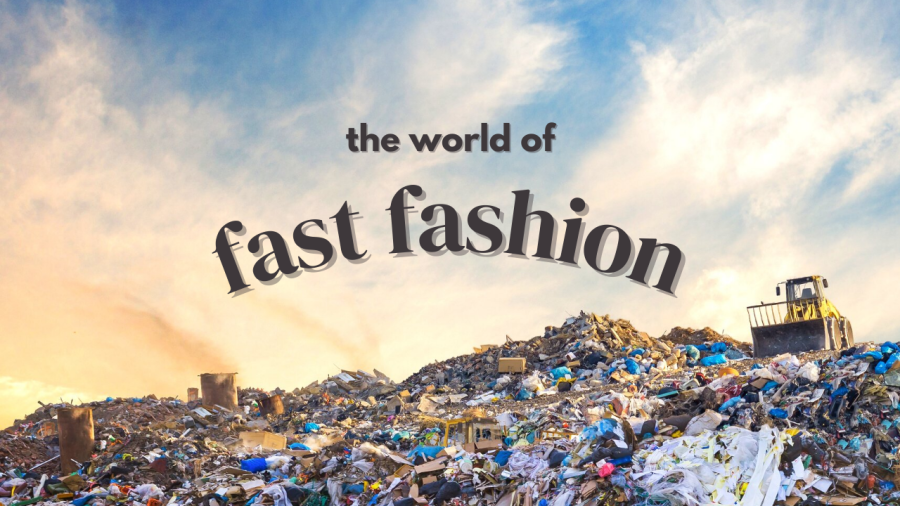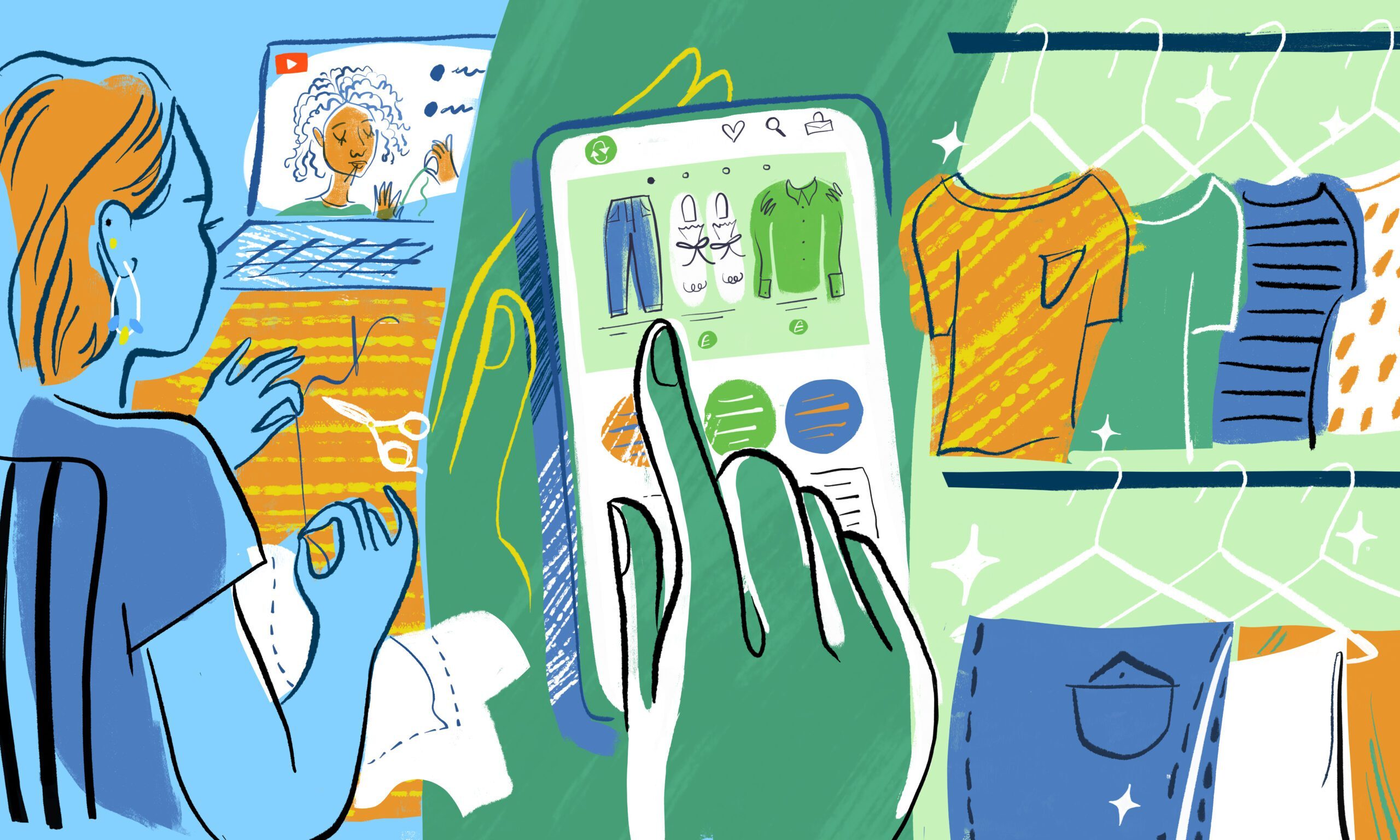Fashion is an industry that’s both dynamic and forward-moving while also absorbing trends. It steers tastes and reflects the moral climate of society at any one time. In recent years, the commercial value aspired to by fast fashion has sparked a fierce desire to counterbalance it.
However, with an ever-growing awareness of how our choices impact the world, an understanding of what these alternatives mean is crucial. By giving an in-depth look at the characteristics, benefits, and drawbacks of fast and slow fashion, this article aids you in making informed and sustainable decisions.
Table of Contents
What Is Fast Fashion?
Fast fashion is the rapid production of low-cost apparel to fit current trends. Brands like Zara, H&M, and Forever 21 epitomize this model, offering new collections almost weekly. The fast fashion business model puts out products so fast that it can make nimble changes. Production is cheap, and the goods sell at volume.
Characteristics of Fast Fashion
Here are some characteristics of fast fashion:
- Rapid production cycles: Fast fashion companies take new looks from the catwalk to the high streets in a matter of weeks. This rapid turnaround allows them to stock the latest fashions that capture consumer attention and drive demand.

- Trend-driven designs: Fast fashion focuses much on trendy clothes, providing almost every design that imitates the looks of the leading fashion. This approach ensures that consumers can fashion their competitiveness without extending their pocket, but it only triggers a short-lived excitement.
- Disposable nature: Fast fashion clothing is cheaply made clothing items that are worn once or twice, after which they are considered outdated and thus discarded. This results in wastage and a negative environmental effect due to large amounts of production instead of quality products.
Benefits of Fast Fashion
Fast fashion has revolutionized the way consumers approach their wardrobes. Below are some specific benefits of fast fashion: affordable pricing, accessibility to the latest trends, and a high turnover of styles.
Affordability
Fast fashion brands make clothing affordable through several strategies. They reduce unit costs by manufacturing large quantities and streamlining supply chains to minimize lead times.
By using inexpensive raw materials and low-cost labor from countries with cheaper production expenses, they further cut costs. Additionally, fast fashion brands save on advertising by relying on word-of-mouth and social media influencers to promote their products.
Accessibility to Latest Trends
Fast fashion creates the most current looks in every size so that everyone is able to wear the trends. They have new stuff every week, so there is always something fresh to find.

Notable partnerships with designers and celebrities result in exclusive capsule collections that serve up high style at a low price. Such regular changeover allows consumers to experiment with new trends and express their personalities at a lower cost.
High Turnover Styles
The fast-changing styles are one of the benefits fast fashion offers. What this does is keep customers interested and coming back for more. Brands create excitement and a FOMO by regularly adding new products, knowing that popular items might not be around later. Sales and earnings improve when consumers purchase more frequently. The biggest sale point of such products is that customers can try out new trends with little financial risk due to the rapid change.
Environmental and Social Impact of Fast Fashion
Despite its popularity, fast fashion has significant environmental repercussions. Moreover, the fast fashion industry often exploits cheap labor in developing countries. Workers face poor working conditions, low wages, and long hours, raising ethical concerns about the true cost of affordable clothing.
The impact of fast fashion on the environment and society is mentioned below:
- High carbon footprint: Synthetic fibers and the often movement of new shipments are big pollutants from greenhouse gases.
- Water pollution: Hazardous substrates are discharged during the dyeing and finishing of textiles. It causes pollution and affects aquatic life and drinking water.
- Textile waste: Due to its get-quick model, fast fashion promotes wasteful consumption which eventually leads to massive amounts of clothes being abandoned in landfills, where synthetic textiles can take an age to recycle.

- Poor labor conditions: Most garment factories in developing countries provide no proper working conditions such as ventilation, safety guards, and sometimes even amenities.
- Low wages: Employees are paid less than the livable wages required to support their families and get out of poverty.
What Is Slow Fashion?
Slow fashion, as opposed to fast fashion, prioritizes quality, sustainability, and ethical production. It pushes for a more considered approach to fashion, emphasizing timeless designs, long-lasting materials, and ethical labor methods. Patagonia, Eileen Fisher, and Reformation are prime examples of slow fashion businesses.
Characteristics of Slow Fashion
Below are mentioned some characteristics of slow fashion:
- Sustainable production: Slow fashion brands use environmentally friendly approaches, including organic farming for natural fibers, low-impact dyes, and minimal waste creation techniques.
- Quality materials: Long-lasting fabric material that can withstand frequent wear and lasts for more than a few years.

- Ethical labor practices: The businesses emphasize fair salaries, safe working environments, and decent treatment for workers across the supply chain. Businesses mainly cooperate with recognized fair-trade groups.
- Timeless, long-lasting designs: Slow fashion focuses on timeless style pieces that cannot come out of fashion quickly. This type of fashion encourages consumers to go out and buy fewer or used pieces that will last a longer time and keep their functionality.
Benefits of Slow Fashion
While the benefits of slow fashion are many and arguably lie with sustainability and ethics, there are a few subtle ones worth mentioning.
Enhanced Personal Style
Slow fashion encourages people to create a unique, personal style rather than chase the ephemeral. It contributes to a more authentic wardrobe that really represents one’s personality and taste.
Long-term Economic Benefits
Although the products of slow fashion are costlier in the beginning, they last for a longer period. It comes out to be relatively cheaper over time than buying cheap, low-quality products that are cycled indefinitely.
Support for Local Artisans
Slow-fashion items are often handmade or manufactured in small batches by local artisans. This boosts the traditional artisanal skills of communities and promotes local economies.
Healthier Materials
Slow fashion brands often favor natural, non-toxic material that is better suited to skin and for health. This reduces the possibility of allergic reactions or exposure to harmful chemicals that are often found in synthetic fibers and dyes.
Lower Stress Levels
The fast fashion cycle creates stress in keeping up with the latest trends. Slow fashion takes away the stress because garments will not go out of style and thus are not obsessively sought after, therefore creating a more untensed environment for shopping.
Environmental and Societal Impact of Slow Fashion
Slow fashion plays a crucial role in cutting down on the environmental effects attributed to clothing production. Apart from the environmental benefits, slow fashion also benefits the well-being of its people. It features fair wages, workplace safety, and respect for the artisan’s own community. Let’s delve into how slow fashion is environmentally and socially impactful.
- Use of organic and recycled materials: These materials include organic cotton, bamboo, and recycled fabrics, which are made with less water and chemicals, causing the least impact on the environment.
- Minimal waste production: Through slow fashion, the minimal stock is produced without any waste, hence eliminating issues such as overproduction, and in some cases, the leftover material is recycled.
- Fair wages: Many slow fashion brands pay their workers well to ensure that they are able to take care of their needs or those of their families.
- Safe working conditions: Such companies respect the rights of the workers by focusing on their safety, offering a safe workplace without risks, and promoting the recognition of labor laws.
Making a Choice Between Fast and Slow Fashion
The decision between fast and slow fashion is based on personal beliefs and priorities. Fast fashion comes cheap, and gives trendy styles, but has plenty of environmental and ethical concerns. It is meant for those who are looking for affordable and updated wardrobes.
Slow fashion, on the other hand, tends toward sustainability, quality, and ethical production; therefore, it is more costly but remains good for a long time. The idea of mindful spending only supports businesses that use eco-friendly products and fair labor.
The decision hinges on the notion that values for affordability and novelty always outweigh values for sustainability and ethics. Such awareness has been transforming into enhanced consumers’ dependence on slow fashion for more sustainability.
How to Transition to Slow Fashion
Transitioning to a slow fashion wardrobe involves making conscious choices and adopting more sustainable habits. Here are a few tips that can help transit from fast to slow fashion:
- Evaluate your wardrobe: The first thing that you should do is evaluate your current clothing and identify your priorities.
- Invest in quality: Avoid purchasing cheap and fashionable products that may wear out so quickly. Instead, opt for quality products that can serve their purpose for several years.
- Support sustainable brands: Choose clothing items from brands that support the right causes, honesty, and ecological responsibility.
- Care for your clothes: Clothing care can go a long way in making your clothes last longer than they usually do. Read washing instructions, fix any clothes that have had some wear and tear, and make sure clothes are stored neatly.
- Buy second-hand: Try to buy second-hand clothing items from vendor outlets like thrift stores, consignment shops, or thrifting websites. These options allow you to update your wardrobe without contributing to the excessive manufacture of new clothing products.
Making a Responsible Fashion Choice!
While often it comes down to preference, fast fashion vs. slow fashion is not just a matter of style—on one side there are considerations around sustainability and ethics, and on the other modern consumerism. But if we really want to help Mother Earth, it is the step we have to take, and even though fashion can be slow, it will be one step that, in the end, all human society will benefit from.
Do you have a fashion brand that needs enhanced visibility and extensive reach? Contact EvolveDash to drive success for your clothing business and the planet. Choose innovation, sustainability, and ethical practices for a brighter future in technology!
FAQs
What are some popular slow fashion brands?
Popular slow fashion brands include Patagonia, Eileen Fisher, Reformation, and People Tree.
How does fast fashion impact water usage?
Fast fashion significantly impacts water resources due to the heavy use of water during textile dyeing and fabric processing. Additionally, synthetic fibers like polyester shed microplastics that pollute water systems.
What are examples of second-hand clothing platforms?
Examples of platforms include ThredUp, Poshmark, Depop, and local thrift stores. These platforms support sustainable shopping habits.
Is slow fashion affordable for everyone?
Slow fashion may seem costly upfront, but its focus on quality and durability can make it cost-effective in the long run by reducing the need for frequent replacements.



















